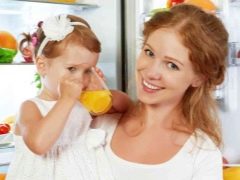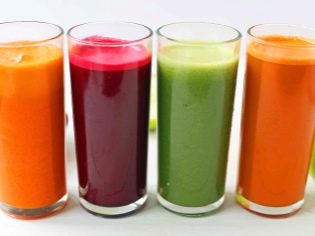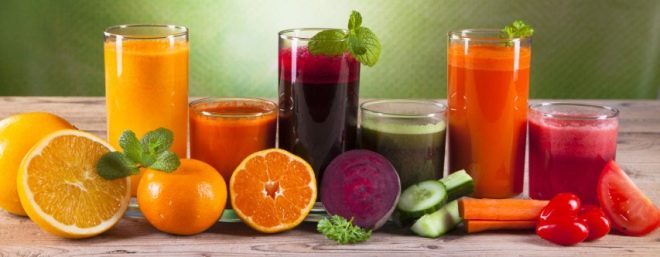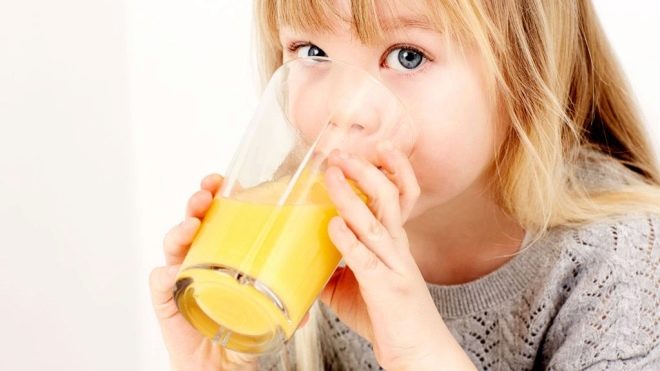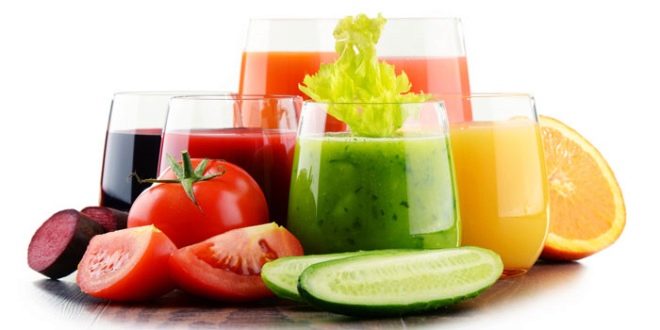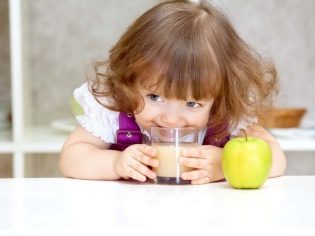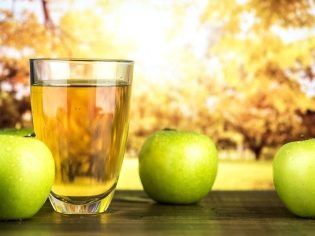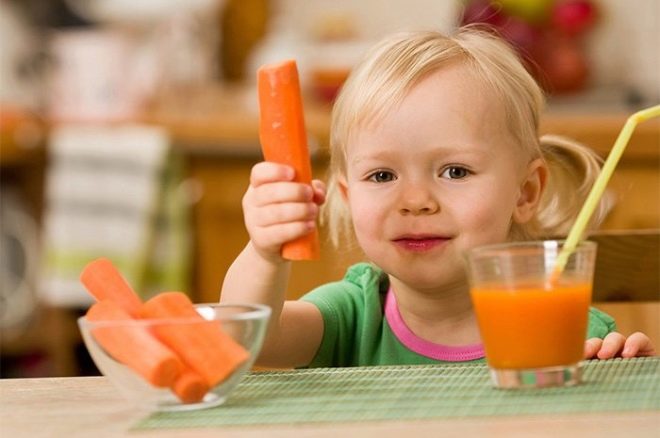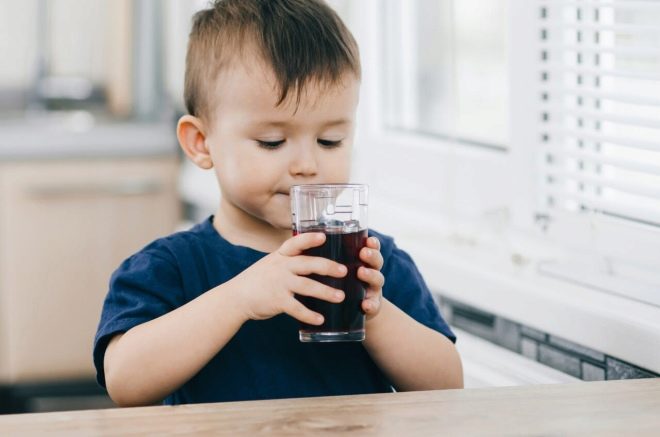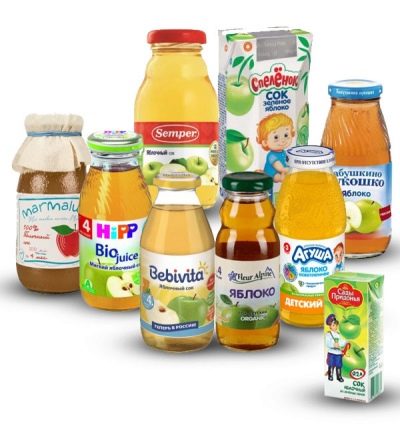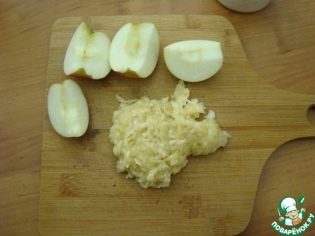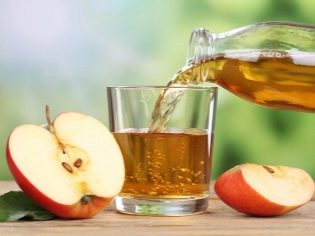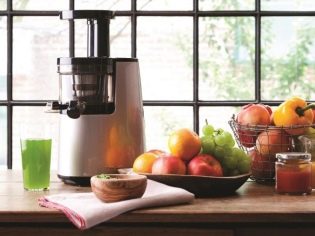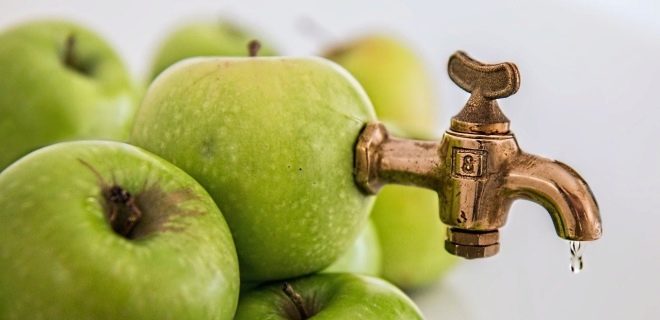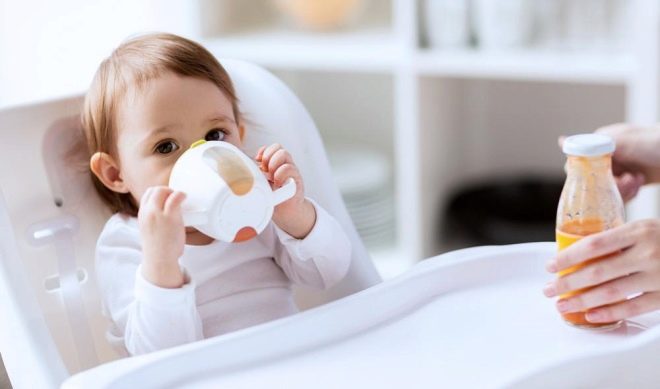From what age and what juices can you give to a child?
Juices appear in the children's menu in the first year of life. However, you should not start feeding with them, as these drinks have some disadvantages.
Familiarity with fruit and vegetable juices, according to pediatricians, should occur when the baby has already tasted boiled vegetables, milk-free cereals and fruit purees. Only after this can you offer the baby natural juice, which can be either freshly squeezed, or from baby food manufacturers.
Benefit
Due to regular use of juices:
- the body receives beneficial minerals and vitamins;
- appetite improves;
- metabolic processes are normalized;
- increases resistance to colds;
- improves the work of the central nervous system;
- water-salt balance is maintained, which is important for intoxication or poisoning;
- the state of the intestinal microflora is normalized;
- decreases blood viscosity, which is required at elevated body temperature;
- stimulates the elimination of excess salts, toxins and other harmful substances;
- the diet is becoming more diverse.
Some types of juices have their own beneficial properties.
- Apple especially rich in ascorbic acid, thiamine, vitamin E, pectin.
- In pear a lot of folic acid, vitamins PP, B1 and C.
- Peach and apricot useful for vision, gums, teeth and bones.
- In pomegranate many vitamins gr. In, polyphenols, ascorbic acid, potassium, phosphorus and calcium.
- Tomato - an excellent source of vitamins C and A, lycopene, pectin and a variety of minerals.
- From pumpkin and carrot juices the child will receive beta carotene.
- From plum - Vitamins PP, B1, A, natural sugars and fiber.
Harm
Once the juice was introduced into the diet of infants very early. Many babies have tried it in 3 months or even earlier. However, later they studied in more detail the effect of juices on the body of the little ones and found out that such a product is rather harmful at an early age than brings tangible benefits.
One of the components of the juice are organic acids. Once in the immature gut of an infant, they can provoke gastrointestinal diseases and allergic reactions. If the baby has a tendency to allergies, try juices as soon as possible and in small quantities.
Due to the irritating effect of the acids on the mucous membrane of the digestive tract, even from a small dose of a fresh drink, there is a strong upset stomach with colic. Such a reaction, judging by the reviews, is often observed at 4-6 months of age and confirms that the Karapuz gastrointestinal tract is not yet ready for a new product.
If a child has any pathology of the gastrointestinal tract, juices are not included in its menu at all.
From what age to give?
If the main food of the baby is mother's milk pediatricians recommend acquainting him with juices at 8 months of age.
Prior to this, all the vitamins and other compounds important for the development of the infant will be obtained from mother’s milk, therefore there is no need to feed it with something vitamin.
- At 8 months a portion of juice for a baby is 10-30 ml.
- At 9 months baby give 50 ml of this drink.
- From 10 months - 60-110 ml.
If baby gets fed adapted mixture then juices can be included in its menu a little earlier - from 7 months.
How to enter the feed?
The first juice, which the child will try, must be hypoallergenic.
Most doctors recommend starting with green apple juice. Giving it to a baby for the first time is necessary in a small amount - just a few drops.
Having offered the toddler a drink in the morning, then the mother should observe his behavior and state of health.
If a rash does not appear on the skin, the chair has not changed, the baby is alert and active, the next time you can give the crumbs a little more of the same juice. If there are any negative changes from the introduction of a new product in the menu of the child is for some time to refuse.
When the baby gets used to one juice, you can offer him a different look, for example, from pears or carrots.
Between the introduction of two different juices should pass at least 7 days. Acquaintance with each new type of drink should be carried out in the same way as the introduction of the very first juice - first a few drops, and then increase the serving every day.
After apple juice, children are usually introduced to pear, peach and apricot juices. Further, drinks from cherries, plums, bananas, currants are gradually introduced into the diet.
Of vegetable juices First crumbs offer carrot and pumpkin.
With the introduction beetroot juice hurry is not advised, because it has a laxative effect. Fresh beets can be given to babies older than 8 months only with constipation, after consulting a doctor.
With the introduction of the diet pomegranate juice be careful. Despite its benefits, a rich composition and beneficial effect on blood formation, it is recommended to drink it to children only from 1 year. In addition, the drink must be diluted (first in a ratio of 1: 4, and then can be diluted and less).
Two-component juice blends offer children no earlier than 9 months and only from those drinks that have already been tested separately. The most popular combination of apples with other fruits (peach, banana, plum) or vegetables (pumpkin, carrots).
Use citrus juices or any exotic fruit it is forbidden for a year, and older children should be given them with extreme caution. If the child is prone to allergies, it is recommended to wait until the age of 12 months and with any drinks from red berries, and also from tomatoes.
Buy or squeeze at home?
The range of juices for kids these days is quite wide. Such drinks are offered by various manufacturers of baby food, noting on the packaging the age at which they can be given to children.
In such juices there are no harmful additives, and the raw materials for their manufacture are seriously checked to prevent the salts of heavy metals, nitrates or pesticides from getting into the children's organism. The release of such products takes place on specialized equipment, which is used only for the manufacture of baby food.
The law prohibits the addition of flavors, colors or preservatives to these beverages. So you can not worry and boldly offer them to the baby, checking before opening the expiration date and package integrity.
The main advantages of factory children's juices are the possibility of long-term storage (if the packaging has not yet been opened) and readiness for use. They do not need to be diluted with water, but can be given to the child directly from a bottle or box.
If mother decided to prepare the juice for the baby herself, it must be diluted with water. Pediatricians recommend a ratio of 1: 1.
For freshly squeezed home juices, it is necessary to pick ripe and juicy fruits without damage and traces of rot. After washing them and removing the peel, the fruits are rubbed on a fine grater and the resulting mass is squeezed using gauze or a sieve. This method of preparation is in demand when the child only begins to taste the juices and they are given in small quantities.
Older children can prepare a drink using a juicer, as well as for other family members.
Opinion of Dr. Komarovsky
The famous pediatrician, like most other pediatricians, does not recommend giving juice to children younger than 6 months. He does not consider this drink to be a particularly important and useful product. On the contrary, according to Komarovsky, fruit puree much more benefits. One of them is helping digestion of babies, in particular, with a tendency to constipation.
Regarding the type of juice for the first sample, the popular doctor does not advise to choose some kind of exotic. The best option, according to Komarovsky, is apple juice.
It is preferable to give the baby a product of their own making and in small quantities. Then mom will be sure that there are no additives or preservatives in the drink.
Useful tips
- You should not give juice from a baby bottle, so as not to provoke the development of the so-called "bottle" caries. Babies should drink this drink from non-spill cups or ordinary cups and glasses.
- So that juice primer does not affect the child's appetite, do not offer it as a snack or after a meal. Let the baby drink it after he has eaten the main food, which will be for him the main source of calories and nutritional components.
- Carefully read the labels on the bottles and boxes of juice factory-made. Pick for kids 100% drinks with no added white sugar and fructose.
- Watch out for the daily portion that a child consumes: it should not exceed 120 ml for babies under one year old and 200 ml for older children. If a child constantly asks and drinks a lot of juice, more often offer him water to quench his thirst, and also dilute fruit juices with water. Remember that such a drink is a source of extra calories, so limit it in the diet of children who are gaining weight quickly.
